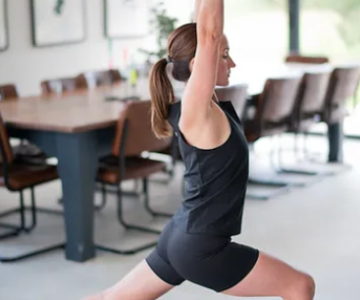As a runner, if strength training isn’t part of your routine, you could be missing out on some important benefits. Ask yourself: “Do I want to run faster? Do I want to feel better during my runs? Do I want to reduce my chances of injury?” If you answered yes to any of these questions, adding strength training to your weekly schedule could be a game-changer.
Research has consistently shown that strength training improves essential running metrics such as VO2max, lactate threshold, muscle power, and overall long-distance performance. This holds true for both seasoned athletes and those new to running. Strength training also helps improve neuromuscular function, increase muscle recruitment, decrease ground contact time, and enhance muscle stiffness, all of which contribute to better running mechanics.
While many runners might feel overwhelmed or unsure about how to add strength training into their routine, it doesn’t need to be complicated or time-consuming. Below are a few key tips to keep in mind before you start:
- Focus on your breathing. Proper breathing is crucial for maintaining core stability. If you hold your breath during exercises, you’ll reduce the effectiveness of your deep core muscles, which are key to stability and power when running.
- Choose running-specific exercises. Aim for movements that mimic the actions of running, such as single-leg work, and exercises that emphasize triple flexion and extension (the motions your legs go through when you run). Maintaining a strong, aligned posture, with your rib cage stacked over your pelvis, is also vital for efficiency.
- Make it enjoyable. If strength training feels like a chore, you’re less likely to stick with it. Consider joining a group for motivation or performing exercises either before or after your runs, or on your rest days. The more fun you have, the more likely you are to stay consistent.
Here are a few exercises that I recommend incorporating into your routine:
- Lunges with rotation
Start with a basic lunge, and once you’re comfortable with the movement, add a rotation for an extra challenge. This helps improve core and hip stabilization. Focus on keeping your knee in line with your toes and rotating through your torso as you lunge. - Heel raises with a ball
This exercise is great for addressing overpronation, foot pain, or issues like posterior tibialis. Stand with a ball between your heels and a slight forward lean (similar to the posture you have when running). Slowly raise and lower your heels, focusing on the eccentric (lowering) phase, which is just as important, if not more so, than the upward motion. - Side plank with leg lift
The side plank is a great way to improve core stability, posture, and glute strength. Once the basic side plank becomes easy, try lifting and lowering the top leg to increase the challenge and further engage your glutes. - Hamstring curls on a ball
This one is tough but effective! It combines leg and core strength while really targeting the hamstrings. It might burn, but it’s worth it for improving your running power and flexibility. - Single-leg squats
Since running primarily engages one leg at a time, single-leg squats are crucial for strengthening each leg individually. If you’re new to this exercise, try using TRX bands or holding onto a door frame for support to maintain good posture and balance as you squat.
Incorporating strength training into your routine just two or three days a week can have a major impact on your running performance and injury prevention. Try it for a month and notice how your running improves, both in terms of speed and how you feel during and after your runs.





